Apatite Visible Spectra (350 - 1100 nm)
The origin of color in apatite, Ca5(PO4)3F, is often associated with the rare earth
elements. Nd is often the most abundant rare earth element in apatite.
Manganese is associated with the deep violet apatites. Many apatites
owe
part of their color to natural radiation induced color centers
involving
ions such as SiO3-
(green) and SO3-
(blue).
Images of representative apatite spectra
Amber-yellow Apatite
These show prominent rare-earth lines in the spectrum
Green and Blue Apatites
Deep Blue Apatites
Pale Lavender Apatites
Pink Apatites
- Pink apatite;
GRR 3013
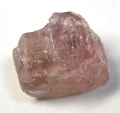 Maple Lode pegmatite, San Diego County, California, USA. 5.30 mm thick.
Data Files: E⊥c; E\\c
Maple Lode pegmatite, San Diego County, California, USA. 5.30 mm thick.
Data Files: E⊥c; E\\c
Compare these data to the data
published by Gilinskaya & Mashkovtsev (1995)
- Blue;
from Slyudyanka, Siberia, Russia. Color ascribed to SO3-.
[Link
to
a picture]
- Bottle green;
from Aldan, Russia. Color ascribed to Nd, Pr, Ce plus SiO3-.
- Dark blue;
from Karelia, Russia. Color ascribed to MnO43-.
- Yellowish;
from Lovozero. Color ascribed to Pr, Nd, and a band at 520
nm. from
Lovozero.
- Nearly
colorless from Vishneyve Gory.
Link to a collection
of references to mostly color and visible spectroscopy of
apatites
 Back
to the list of minerals
Back
to the list of minerals
 Back
to the Index of Data Files
Back
to the Index of Data Files
 Back
to the
Mineral Spectroscopy home page
Back
to the
Mineral Spectroscopy home page
revised 5-Jul-2022
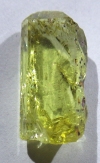 from Durango,
Mexico. 4.25 mm thick. Data Files: E⊥c;
E\\c
from Durango,
Mexico. 4.25 mm thick. Data Files: E⊥c;
E\\c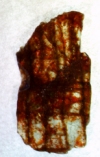 with occasional clear areas from the
Hybla roadcut, Ontario, Canada. 1.28 mm thick. Data Files: E⊥c; E\\c
with occasional clear areas from the
Hybla roadcut, Ontario, Canada. 1.28 mm thick. Data Files: E⊥c; E\\c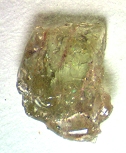 ,
from the Silver Crater Mine, Bancroft, Ontario, Canada. 1.26 mm
thick. Data Files: E⊥c;
E\\c
,
from the Silver Crater Mine, Bancroft, Ontario, Canada. 1.26 mm
thick. Data Files: E⊥c;
E\\c from the Fission
Mine, Bancroft, Ontario, Canada. 3.84 mm
thick. Data Files:
from the Fission
Mine, Bancroft, Ontario, Canada. 3.84 mm
thick. Data Files:  from an unspecified locality in Brazil. 0.831 mm thick. Data Files:
from an unspecified locality in Brazil. 0.831 mm thick. Data Files:  from Ihosy, northern Madagascar . This
sample
was
heat-treated to turn it from green to
from Ihosy, northern Madagascar . This
sample
was
heat-treated to turn it from green to 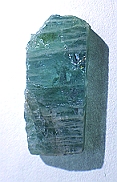
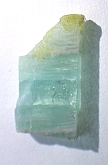
 from Bahia, Brazil, 1.166 mm thick.
Data Files:
from Bahia, Brazil, 1.166 mm thick.
Data Files: 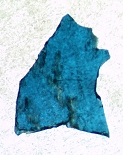 Hugo Mine, Keystone,
South Dakota. 0.191 mm thick. This color is
ascribed to MnO43-
subsituting in the PO43-
site. Data Files:
Hugo Mine, Keystone,
South Dakota. 0.191 mm thick. This color is
ascribed to MnO43-
subsituting in the PO43-
site. Data Files:  from Teofilo Otoni, Brazil. 0.496 mm
thick. Data Files:
from Teofilo Otoni, Brazil. 0.496 mm
thick. Data Files:  from
Pennington, South Dakota, USA. 2.57 mm thick. Data Files:
from
Pennington, South Dakota, USA. 2.57 mm thick. Data Files:  from Paris, Oxford
County, Maine. 2.19 mm thick.
Data Files:
from Paris, Oxford
County, Maine. 2.19 mm thick.
Data Files:  Maple Lode pegmatite, San Diego County, California, USA. 5.30 mm thick.
Data Files:
Maple Lode pegmatite, San Diego County, California, USA. 5.30 mm thick.
Data Files: 